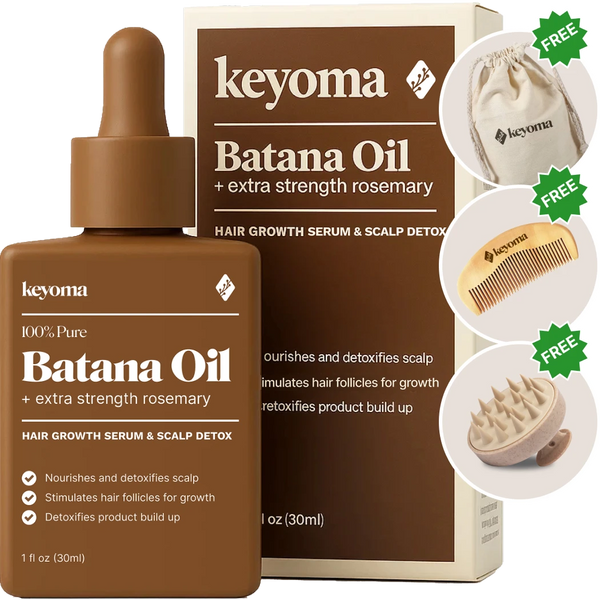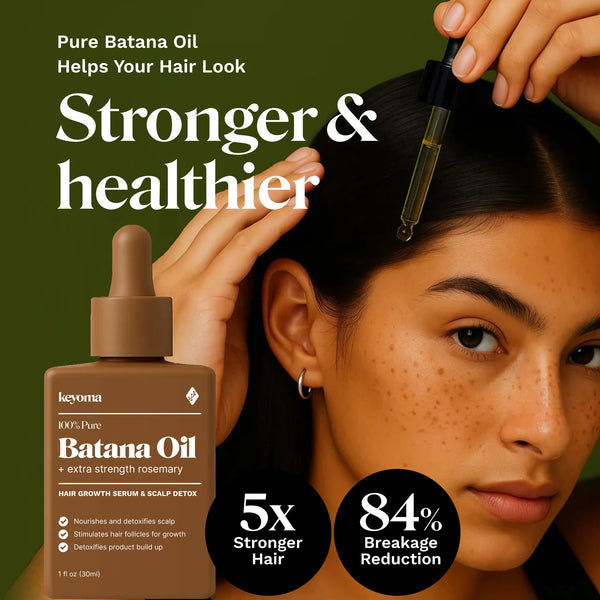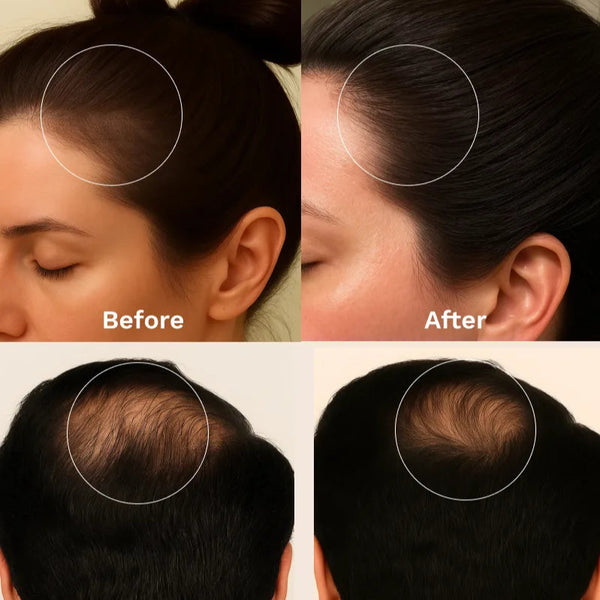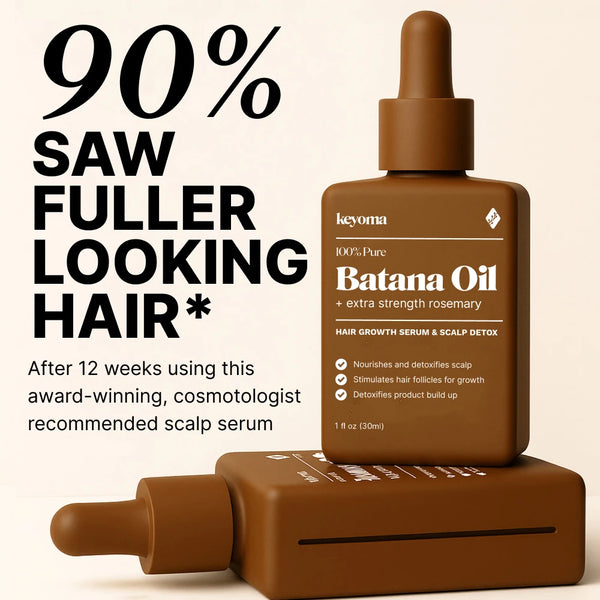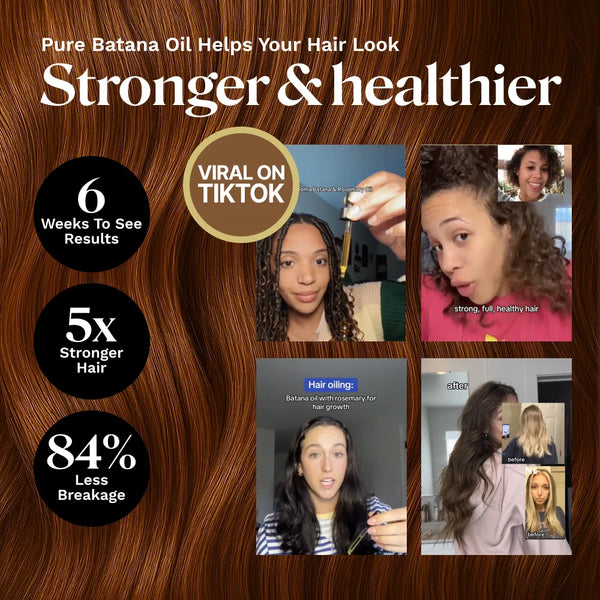In this article
If you’ve ever stood in the shower with a handful of strands or watched them swirl around the drain, you know the worry that comes with shedding. Seeing hair wash away can be startling, discouraging, and even maddening, yet many women experience it—especially after childbirth or periods of stress.
For many women, pregnancy brings thicker, fuller hair. For others, pregnancy comes with the frustrating side effect of thinning or extra shedding. If you’re in the thick of it (pun intended), read on to learn what counts as normal and when treatment might be worth exploring.
Key Takeaways
-
Postpartum hair loss is telogen effluvium after childbirth as hormones normalize, usually temporary.
-
During pregnancy estrogen extends growth; postpartum shifts send many hairs into simultaneous shedding.
-
Contributing factors include stress of labor, nutrient shortfalls, genetics, and thyroid disease.
-
Shedding usually resolves within a year; no proven prevention, supportive habits can improve appearance.
What Is Postpartum Hair Loss?
Postpartum hair thinning or hair loss, known as telogen effluvium, happens when hormone levels return to their usual range after childbirth. While the change can feel surprising and upsetting, it’s helpful to know this shedding is usually temporary, and in most cases growth returns to baseline within a few months.
Causes of Postpartum Hair Loss
Postpartum hair loss mainly stems from shifts in hormones, including estrogen, during and after pregnancy. While pregnant, higher estrogen extends the growth phase, so hair can look longer and thicker. After delivery, hormones reset to normal levels, sending many hairs that were growing into the shedding phase at the same time.
Other contributors to postpartum hair loss include:
-
The physical and emotional stress of labor and recovery
-
Nutrient shortfalls after delivery, especially if you’re breastfeeding and your body prioritizes milk production
-
Genetics, since some women may be more prone to noticeable changes due to inherited factors
-
Thyroid disease that is untreated or not well controlled
How Long Postpartum Hair Loss Lasts
Don’t panic: you’re not going bald; your hair is settling back to normal. If you’re breastfeeding, some of that extra hair may stick around until you wean or start supplementing with formula or solids.
Whether you nurse or not, take heart: by the time your baby turns one—and may have a head of hair too—your catch-up shedding is typically done, and your strands usually look much like they did before pregnancy.
8 Postpartum Hair Treatments to Consider
It’s normal for hair to thin after pregnancy. If it isn’t bothering you, you don’t need to treat it. And, unfortunately, nothing has been proven to prevent or slow postpartum shedding. But if the loss worries you, these options may help your hair look fuller and healthier.
Eat Well
A mix of fruits, vegetables, and quality protein is the best way to make sure your body gets the nutrients it needs.
Foods often suggested to support hair include dark leafy greens (for iron and vitamin C), sweet potatoes and carrots (for beta carotene), eggs (for vitamin D), and fish (for omega-3s and magnesium).

Keep Taking Your Vitamins
Vitamins shouldn’t replace a balanced diet, especially when you’re caring for a newborn. They can help as a supplement if your meals aren’t varied enough.
While no specific vitamin has been shown to change hair loss, they matter for overall health. Many providers suggest continuing your prenatal vitamins after delivery, especially if you’re breastfeeding.

Use Batana Oil with Rosemary
Patch-test first on a small area, then apply a few drops nightly and leave it on while you sleep. Blend batana oil with rosemary to gently massage into your scalp and smooth through mid-lengths and ends.
Rosemary is known for supporting scalp circulation and thicker-looking hair with consistent use. Check out what people on TikTok are saying about this combination.

Skip Heat Styling
Heat from a dryer or curling iron can make hair appear thinner. Try pausing the elaborate styling and let your hair air-dry until the shedding eases.
Brushing too aggressively can also make strands come out in larger clumps, so go gently and limit brushing to once a day. Use the extra minutes to cuddle your baby or catch a quick nap.

Manage Stress
Studies show that chronic stress can contribute to hair loss. We know it’s tough to hear when you’re already stressed, but the link is a useful reminder that your physical health connects to your emotional and mental wellbeing. Doing what you can to stay balanced benefits your body—and your strands.

Try Scalp Massage
A scalp massage isn’t just relaxing. One small study found that daily 4-minute scalp massages led to thicker hair. The effect may come from dilating blood vessels beneath the skin, which could support stronger, thicker strands.

Use a Volumizing Shampoo
There’s no solid evidence, but conditioning shampoos can sometimes weigh hair down and make it look flatter. Volumizing formulas may add body and help you maintain a fuller look.

Trim Regularly
Consider this your reminder that regular trims support healthy growth by removing split ends and keeping them from traveling up the shaft and causing breakage. For me, small dusting trims kept ends from snagging during detangling sessions. While it might feel counterintuitive that trims lead to longer hair, it’s important to snip when strands are damaged.

How to Prevent Postpartum Hair Loss?
If “how to boost fertility?” is among the most common questions about fertility, then “how do you prevent postpartum hair loss?” is one of the most asked in the months after birth. Fortunately, some of the answers overlap.
You can lower the risk of postpartum hair loss by maintaining overall health and helpful habits in the weeks and months after delivery:
-
Make time for regular, gentle-to-moderate exercise.
-
Eat a nutrient-rich diet to support your changing body and aid postpartum recovery.
-
Take postpartum vitamin and mineral supplements if your doctor recommends them.
Start Gentle Postpartum Care Today With Keyoma
Now that you know why postpartum shedding happens and what actually helps, treat it as a normal reset after delivery. Most people see catch-up growth over the first year, and breastfeeding can extend the timeline.
Keep care gentle: limit heat styling, eat a balanced diet, consider continuing prenatal vitamins if advised, use volumizing shampoo, trim regularly, manage stress, and try a brief daily scalp massage.
Start gently and reduce side effects, try Keyoma’s Batana Oil with Rosemary as a daily scalp oil, or use it alongside your current plan to add simple, nourishing moisture and everyday comfort. Start now to support the next growth cycle.
Featured Product
100% Pure Batana Oil + Rosemary
↓Best Batana Oil to Buy↓
1 Month
Subscribe & Save
- 30-day supply delivered monthly $35
- 30% off for life $6
- Free haircare essentials kit $33
- Free custom wooden comb $10
- Free scalp massager $15
- Free eco-friendly travel bag $8
- 30-Day Money Back Guarantee
- Free Shipping
- Online portal for easy cancel, skip, or pause.
1 Month One Time Purchase
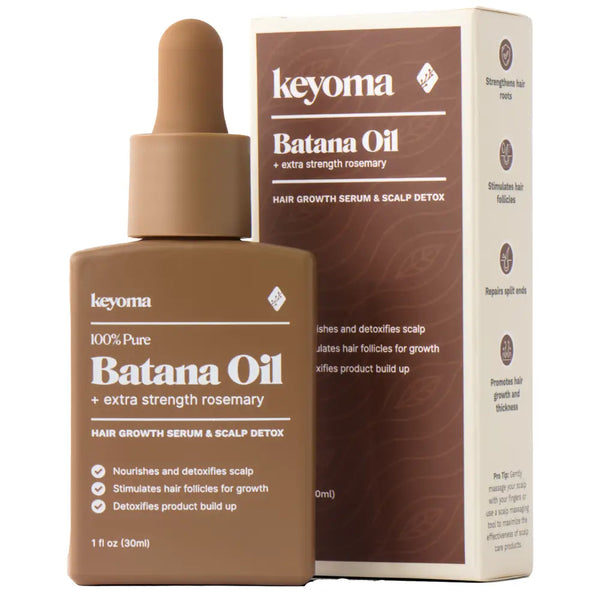
- 30-day supply $50
- 30% off for life $6
- Free haircare essentials kit $33
- Free custom wooden comb $10
- Free scalp massager $15
- Free eco-friendly travel bag $8



